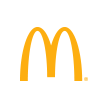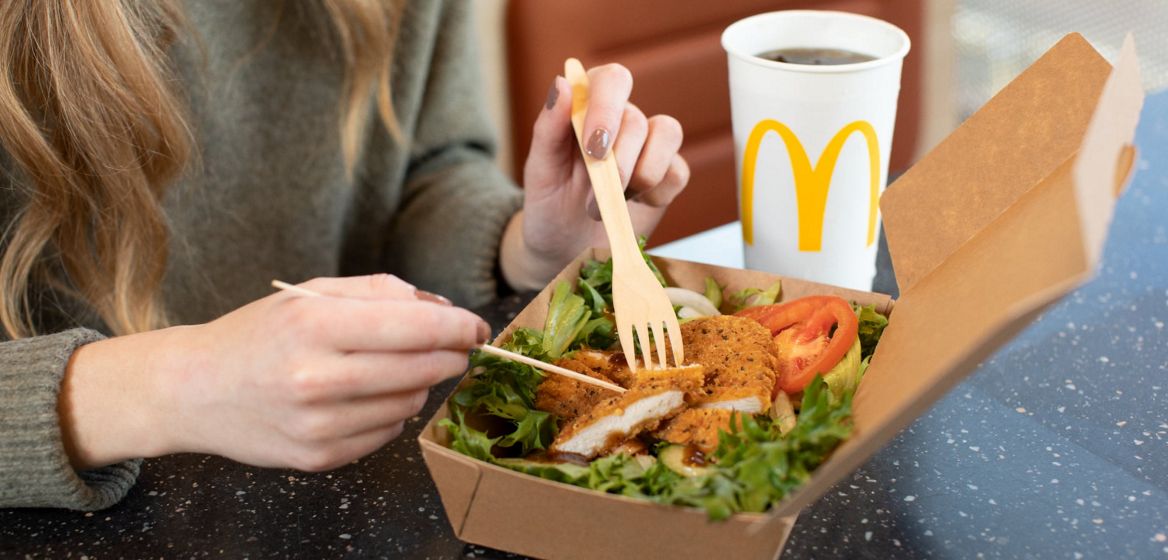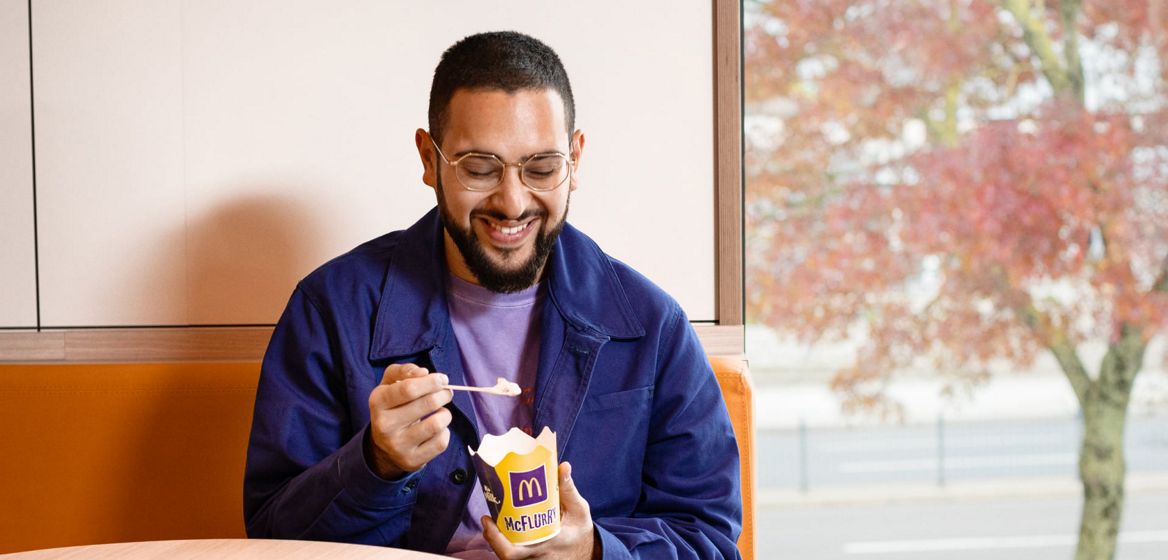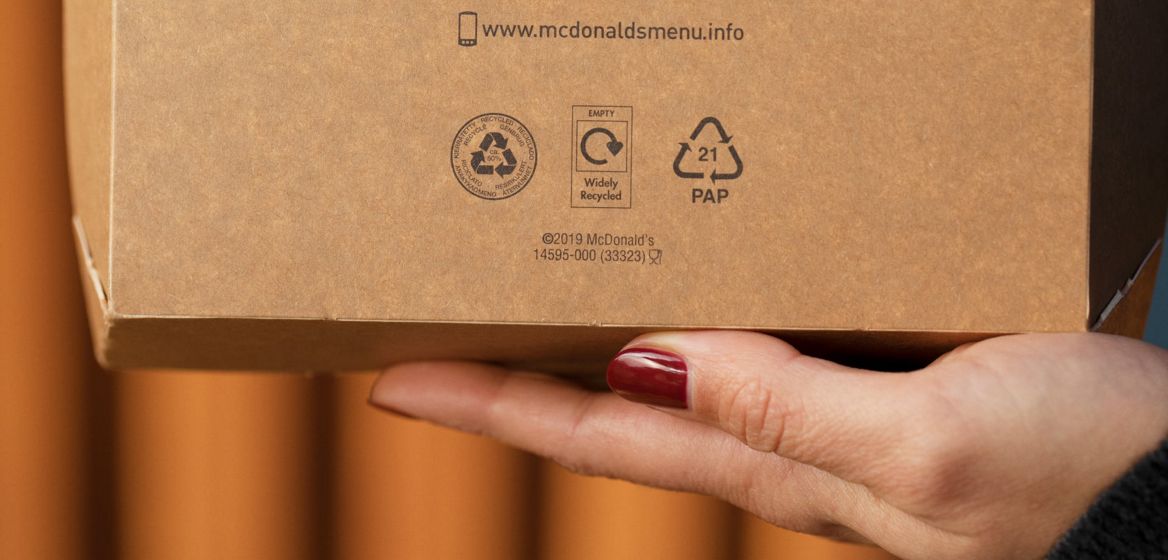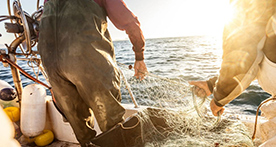Packaging, Toys & Waste
We are working to accelerate solutions that help reduce waste while also transitioning to more sustainable packaging and toy materials.
Our packaging, toys and waste strategies are designed to help keep communities clean, help protect the planet for future generations and support the Company’s long-term business resilience. To achieve this, we’re evolving our packaging – redesigning some of our most iconic products to eliminate unnecessary packaging, identifying alternative materials and increasing opportunities for recovery.
On this page, you'll find information about our approach to this topic and links to related topics. For our progress and performance relating to packaging, toys and waste, see the Goal Performance & Reporting page where you'll find our latest Purpose & Impact Report.
Our Strategy
We’re committed to taking steps to help reduce waste and advance a circular economy. For example, we’re investing in strategies and working collaboratively with other stakeholders to help address systemic challenges related to recycling infrastructure, demand for recycled materials and development of new packaging and toy materials.
By the end of 2025, we are aiming to meet four goals that advance our strategy. See our Packaging, Toys & Waste goals and performance for our latest progress.
Focus on Materials
We have a goal to source 100% of our primary guest packaging from renewable, recycled or certified materials by the end of 2025. Our packaging is designed with recycling in mind, and we are working with suppliers to improve it where possible. Most of McDonald’s primary guest packaging is fiber based, meaning it is primarily made from fiber materials such as paper, pulp, cardboard or wood.
To identify opportunities for transitioning our existing materials to new and more sustainable alternatives, McDonald’s has worked to drive locally relevant packaging innovations across the globe. We are removing or reducing plastic use by redesigning items such as switching to paper-based straws, deploying new McFlurry cups without plastic lids, and introducing salad boxes and cutlery made from renewable fiber. We have also worked with our suppliers to advance innovative molded fiber technologies to replace plastic lids and sundae ice cream cups.
Sourcing Materials Responsibly
We aim to source materials responsibly and to help suppliers advance new technologies. We collaborate with our suppliers and other innovators to help them deliver solutions against the Company’s stated goals.
We have established commodity requirements for both fiber and plastic packaging and maintain a supplier management process that includes sustainability evaluations.
Find out more about our approach to Responsible Sourcing and how we are working to protect Nature, Forests & Water.
Transitioning Away From Virgin Fossil Fuel-Based Plastics
The Company’s strategy for transitioning away from virgin fossil fuel-based plastics focuses on:
- Sourcing 100% of our primary guest packaging1,2 from renewable, recycled or certified materials by the end of 2025.
- Drastically reducing plastics in Happy Meal® toys around the globe and transitioning to more sustainable materials by the end of 2025.3
- Reducing small plastic primary guest packaging that is hard to recycle and unnecessary for safety or functionality, such as straws, plastic bags and cutlery.
- Exploring innovations that help increase plastics recyclability, increase demand for recycled plastics and promote plastic alternatives such as molded fiber, starch-based cups and mineral coatings for fiber.
Packaging Stewardship for Safety
Hygiene, safety and functionality are critical aspects of our guest packaging, and we strive to ensure they are balanced with long-term sustainability. To uphold this, we follow a product stewardship process that includes robust evaluation and testing of chemicals used in our guest packaging.
We take steps to help ensure the Company’s guest packaging materials comply with all applicable laws. We are committed to ensuring all primary guest packaging is free from intentionally added fluorinated compounds by the end of 2025.4
Visit our Food Safety page to learn more about our commitment to food safety.
Focus on Circular Economy
We understand the significant opportunity and responsibility to use materials and natural resources efficiently – from sourcing and design to end-of-life management of everything we use to serve our customers. We focus on a circular economy approach and seek to apply it to areas across our business, from guest packaging to restaurant design.
We aim to implement solutions across our business to advance the recycling of guest packaging and help create demand for recycled materials.
Examples of actions we are taking to help achieve our ambitions include:
- Helping enable the recycling of guest packaging in restaurants – with solutions tailored to specific markets and suited to local needs and infrastructure – such as providing recycling bins in restaurants where infrastructure exists.
- Collaborating with waste management companies, suppliers and other brands to help remove some of the barriers to guest packaging recycling or composting. For example, McDonald’s restaurants in Poland operate within a closed waste management system that enables recycling of food-contaminated fiber-based packaging, including polyethylene-lined cups. In partnership with recycler Miklan-Ryza, proprietary technology allows 95% of this packaging to be recycled. The recovered material is repurposed into items such as toilet paper, paper towels and cup carriers for use in restaurants. Customers are encouraged to sort waste into paper, plastic and mixed bins, with crew consolidating fiber packaging for collection.
- Working with suppliers to optimize our packaging for recycling, where feasible.
- Using on-packaging labeling where feasible and consistent with applicable law, to help make recycling and disposal choices easier for guests.
- Helping create demand for recycled materials by sourcing more recycled materials for use in our packaging.
- Utilizing transport logistics companies to help us efficiently collect recyclables from restaurants.
Increasing Demand for Recycled Materials
One of our goals is to source 100% of our primary guest packaging from renewable, recycled or certified materials by the end of 2025. Because food-grade recycled material is in limited supply, we are focusing on sourcing recycled materials for paper bags, napkins and cup carriers first. Depending on location, recycled materials are also currently used in some hot beverage cups, cup sleeves, cartons, fry boxes, plastic beverage and dessert cups, as well as select plastic lids. We are collaborating with industry organizations and other brands to help leverage scale and create demand for food-safe, post-consumer recycled materials.
We aim to expand our use of recycled materials, consistent with our goal of implementing global and local solutions across our business to help create demand for recycled materials by the end of 2025. This includes packaging, toys and design materials for restaurants and facilities.
Collaborating to Increase Scale of Circularity Solutions
Promoting circularity is not a challenge we can tackle alone. To help drive the scale and impact of a circular economy approach to guest packaging and waste, we are engaging with external and internal stakeholders such as peer companies, nongovernmental organizations (NGOs), industry associations, the waste management industry, policymakers, academics, Franchisees, suppliers, customers and restaurant crew. We also share learnings with policymakers from the Company’s experience of its restaurants and supply chain to help foster evidence-based policymaking.
Examples of such engagement include:
- McDonald’s USA joined the NextGen Consortium, which aims to address the global issue of single-use food packaging waste. The Consortium has representation from several brands and plays a leading role in increasing recycling access for paper and plastic single-use foodservice packaging through collaborations with various industry bodies, NGOs and communities.
- The Company is a member of the Bioplastic Feedstock Alliance (BFA), a WWF-led consortium of companies, NGOs and academia advancing thought leadership on responsibly sourced bio-based plastic and the role the material can play in supporting circular systems.
- McDonald’s is a founding partner of The Cup Collective, an initiative to expand paper cup and fiber packaging recycling across Europe. It brings together stakeholders from across the value chain, including manufacturers, converters, distributors, retailers, brand owners, waste managers and recyclers. The initiative has launched collection efforts in cities like Brussels, Dublin and across the Netherlands, gathering cups from McDonald’s restaurants, partner stores and public spaces.
- McDonald’s Australia engages with the Australian Packaging Covenant Organization (APCO), a not-for-profit focused on developing a circular, more sustainable packaging economy in Australia. As an APCO Brand Owner Member, McDonald’s submits an annual report highlighting progress against the APCO Packaging Sustainability Framework, a consistent and transparent tool for assessing and tracking packaging sustainability across organizations. Over the years, we have contributed to APCO’s industry discussions, including topics such as limiting certain chemicals in packaging and reviews of how to approach single-use packaging. We have also joined the APCO fiber-based committee working group, providing technical feedback on all fiber-based packaging recyclability.
- McDonald’s USA is a member of the Foodservice Packaging Institute’s (FPI) Paper Recovery Alliance (PRA) and Plastics Recovery Group (PRG). Alongside other brands and packaging suppliers, McDonald’s USA participates in these groups to help increase paper and plastic foodservice packaging recycling or composting. Through the FPI, we work with communities, recycling facilities, composters and end markets to help expand recovery options for these valuable materials.
- McDonald’s USA actively participates with the Association of Plastic Recyclers (APR), an international nonprofit focused on improving recycling for plastics, by developing tools to support design guidance for recyclability and innovation challenges.
- McDonald’s Canada joined the Canada Plastic Pact, which unites partners behind a vision of creating a circular economy.
- McDonald’s USA formally joined The Recycling Partnership’s Polypropylene Recycling Coalition in the U.S. We have committed to a direct contribution of $3 million from 2023–2025 toward the goals of the Coalition to increase recycling of polypropylene.
- The Company engages in the multi-stakeholder group 4evergreen to share learnings and evidence on fiber recycling and reusable packaging. Using the 4evergreen platform, we share expertise to develop tools, solutions and guidelines to jointly reach improved recycling rates for fiber-based packaging in Europe.
Introducing Reusable Packaging
Reusable packaging is guest-facing packaging for food and beverages that customers can use and then return to McDonald’s before it is washed and reused over again.
Reusable packaging is viewed by some policymakers as a solution to reduce packaging and plastic waste, which has led to regulatory requirements that limit the use of single-use packaging materials or mandate reusable packaging. Mandatory reusables pose operational challenges and can lead to unintended environmental impacts, such as increased plastic use and waste if reusable items are not returned and reused repeatedly, as well as increased energy use and greenhouse gas emissions. We continue to assess the impact of reusable packaging in our restaurants, alongside other circularity solutions, in line with local regulations.
- McDonald’s has developed a reusable packaging portfolio, made of plastic, to respond to reusable packaging requirements as they arise. Ceramics, metals, glass, and non-food-safe plastics were rejected due to safety concerns and the impracticality of serving millions of customers with heavier, brittle materials across both dine-in and take-out.
- We believe additional tools, such as recycling, recovery and reduction, must continue to be part of overall guest packaging-related waste reduction strategies. This includes improving recycling for guest packaging – making it easier for customers to recycle it where infrastructure exists and reducing the amount of guest packaging-related waste coming from our restaurants. Only with the right mix of feasible solutions can McDonald’s – and the food service industry more broadly – achieve packaging circularity.
Focus on Waste
We believe the greatest opportunity to address guest packaging-related waste is to advance safe, proven solutions – including reduction and recycling – where existing infrastructure and innovation can be effectively scaled across industries and communities.
In markets with an advanced waste infrastructure5 that is widely accessible and robust, we offer guests the opportunity to sort packaging for recycling in restaurants. In areas where recycling infrastructure is underdeveloped and less robust, we aim to help advance the development of recycling systems through advocacy and related strategies.
We also aim to eliminate any unnecessary packaging where we can. For example, we try to help reduce guest packaging-related waste volumes associated with items such as straws, napkins and cutlery by only providing such items upon request in certain locations.
Reducing Litter
We are taking action to advance litter reduction initiatives in certain locations, such as through engagement with government, recycling companies and consumers. Additionally, we’re collaborating with companies and nonprofit organizations to support development and expansion of recycling.
Addressing Food Waste
McDonald’s has developed guidelines to reduce supply chain food waste using a hierarchy adapted from the U.S. Environmental Protection Agency’s (EPA) Food Recovery Hierarchy. Our approach is supported by our Global Food Disposition Policy to help reduce food waste in restaurants and supply chain facilities, encouraging markets to develop solutions and approaches based on local needs and priorities.
Key Definitions
- Certified: Refers to products and entities that comply with the Forest Management and Chain of Custody certification requirements set out by one of the following third-party schemes: Forest Stewardship Council (FSC), Programme for the Endorsement of Forest Certification (PEFC), Sustainable Forestry Initiative (SFI). To meet McDonald’s requirements, the finished product’s certified content must be a minimum of 70%. Source: FSC, PEFC and SFI.
- Fluorinated means: Materials with carbon-hydrogen bonds, in which at least one hydrogen atom is replaced with a fluorine atom. We are committed to removing all intentionally added fluorinated compounds from our guest packaging materials globally. Packaging primarily targeted for assessment includes those items that may contain oil and grease barrier coatings, which have potential to contain in excess of 100 ppm Total Organic Fluorine (TOF) content.
- Primary guest packaging: Single-use fiber and plastic packaging and ancillaries used to package guest food and drinks on premises at McDonald’s restaurants that are given to customers in all order channels. This also includes Happy Meal toy and book packaging, all coatings on fiber-based packaging and items made of 100% non-wood Alternative Natural Fibers. Excluded are pre-packed items, limited locally sourced items, non-structural packaging components such as adhesives, inks, overprint varnishes, retention agents, binders, nucleating and clarifying agents, impact modifiers, and minerals.
- Recycled sources: Material that has been reprocessed from recovered (reclaimed) material by means of a manufacturing process and made into a final product or into a component for incorporation into a product. Recycled material applies to plastics and fiber. To meet McDonald’s requirements,100% recycled fiber products must be third-party verified, unless certified under a Chain of Custody. Source: ISO 14021:2016.
- Renewable material: Material that is composed of biomass from a living source and that can be continually replenished. For McDonald’s definitions, renewable only refers to plastics, not fiber. Source: ISO 14021:2016, for plastic, ASTM 6866 or ISO 16620-2.
- Virgin fossil fuel-based plastics/conventional/traditional plastic: Plastics made from virgin fossil fuel feedstock.
Footnotes
1 Packaging. Scope: Inclusive of all markets for our fiber-based packaging, plastic-based packaging and Happy Meal book and toy packaging. Renewable sources refers to material that is composed of biomass from a living source and that can be continually replenished. Renewable applies to plastics only, not fiber. Source: ISO 14021:2016 for plastic, ASTM 6866 or ISO 16620-2. Fiber-based packaging made from 100% recycled sources must be third-party verified, unless certified under a Chain of Custody Forest Management standard. McDonald’s requires all wood fiber finished products originating from Argentina, Cambodia, China, Indonesia, Laos, Malaysia and Vietnam to be FSC-certified or FSC-controlled wood sources with full chain of custody certification. Please refer to our Nature, Forests & Water web page for additional definitions. Exclusions: Primary fiber-based packaging in food packaged off-site of McDonald’s restaurants, tray liners, test items and limited locally sourced items.
2 Non-structural components of packaging vary based on the packaging, but may include adhesives, inks, overprint varnishes, retention agents or binders, processing aids, impact modifiers, minerals used non-structurally as well as structurally, and nucleating and clarifying agents. We continue to monitor industry standards on these components and opportunities to work toward making any part of our packaging, including non-structural components, more sustainable.
3 Toys. Scope: Inclusive of all toys. Fiber-based toys or fiber components in the toys: 100% certified fiber required. All other materials: McDonald’s ambition is to reduce the use of virgin fossil fuel-based plastics, offer more sustainable toys by the end of 2025 and not manufacture electronics and batteries in Happy Meal toys globally. For plastics to be considered sustainable for McDonald’s, a minimum of 60% of plastic weight is required to come from recycled or renewable content or a combination of recycled and renewable content, though in many practical applications we anticipate that percentage will be much higher. The remaining 40% may be conventional fossil fuel-based material. These thresholds were developed in conjunction with input from nongovernmental organizations (NGOs), external manufacturing partners and scientists, and based on an assessment of sustainable toy and packaging industry leaders so that our targets reflected current sustainable engineering capabilities to maintain safety and functionality. Our efforts will result in an approximate 90% reduction in virgin fossil fuel-based plastic use against a 2018 baseline. Fiber-based packaging made from 100% recycled sources must be third-party verified, unless certified under a Chain of Custody Forest Management standard. Source: ISO 14021:2016. McDonald’s requires all wood fiber finished product originating from Argentina, Cambodia, China, Indonesia, Laos, Malaysia and Vietnam to be FSC-certified or FSC-controlled wood sources with full chain of custody certification. Exclusions: The thresholds described above do not include the presence of adhesives, glues, inks, overprint varnishes, pigments, heat transfer labels, retention agents or binders, processing aids, nucleating agents and clarifying agents, impact modifiers, two-color plush cord, thread, sewn-in tags, lining tape, high-pile, inaccessible metal components, pencil cores and gearboxes.
4 Fluorinated Compounds. Scope: Inclusive of all markets except for Israel, Latin America and Turkey, and Happy Meal book and toy packaging. McDonald’s commits to not intentionally adding organic fluorinated compounds through our processes; however, fluorinated compounds present in the local environment make it difficult to ensure there are no traces of organic fluorine from packaging. Exclusions: Primary fiber-based packaging in food packaged off-site of McDonald’s restaurants, tray liners, test items and limited locally sourced items.
5 Markets with advanced infrastructure: Mature waste and recycling infrastructure at a national level that has (1) a recycling infrastructure network across the entire market, (2) multiple materials being recycled within this national infrastructure network, (3) existing legislation on recycling and (4) high customer awareness of waste and recycling. At the end of 2024, that included 21 markets where McDonald’s operates.
